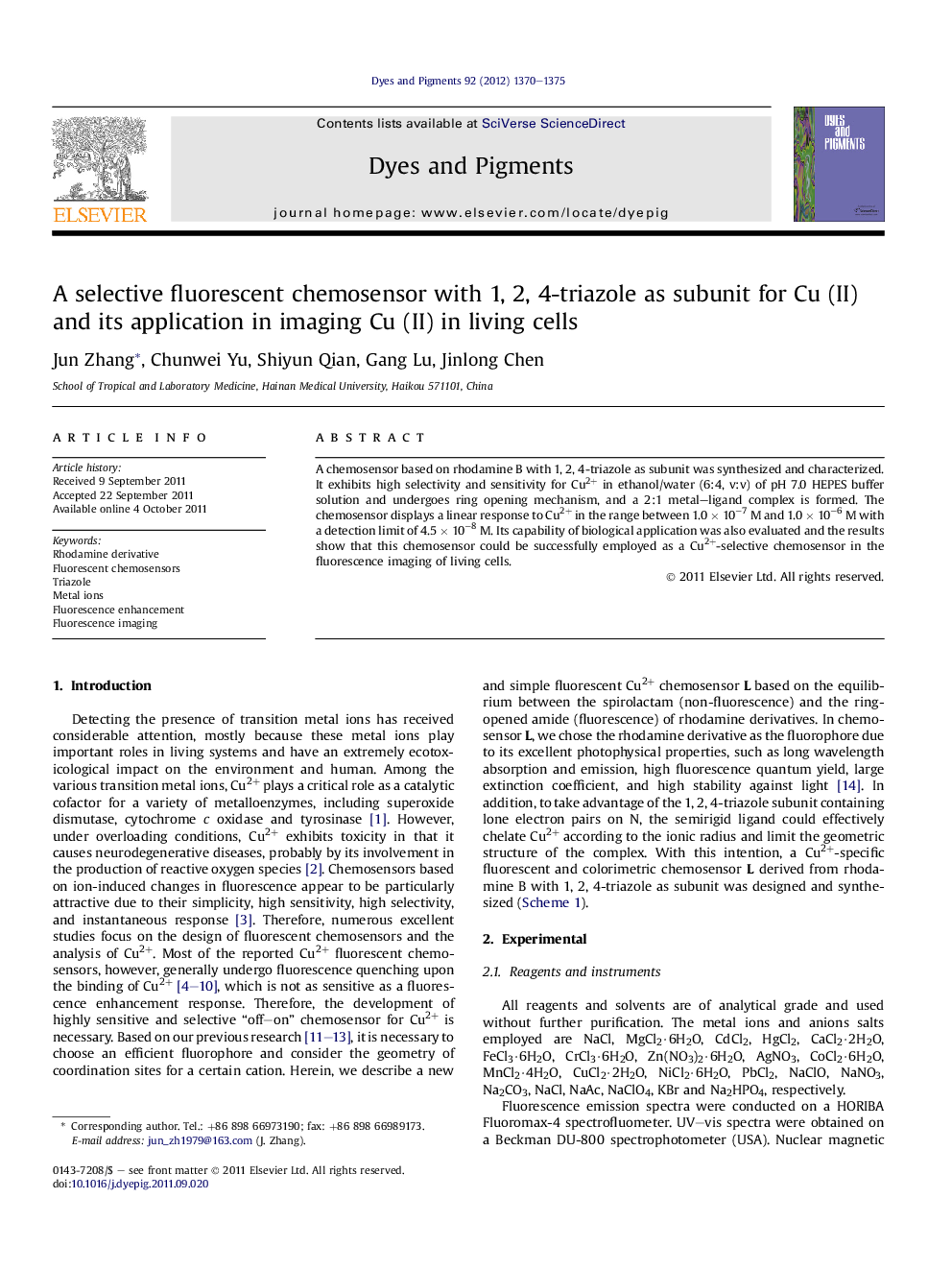| Article ID | Journal | Published Year | Pages | File Type |
|---|---|---|---|---|
| 177059 | Dyes and Pigments | 2012 | 6 Pages |
A chemosensor based on rhodamine B with 1, 2, 4-triazole as subunit was synthesized and characterized. It exhibits high selectivity and sensitivity for Cu2+ in ethanol/water (6:4, v:v) of pH 7.0 HEPES buffer solution and undergoes ring opening mechanism, and a 2:1 metal–ligand complex is formed. The chemosensor displays a linear response to Cu2+ in the range between 1.0 × 10−7 M and 1.0 × 10−6 M with a detection limit of 4.5 × 10−8 M. Its capability of biological application was also evaluated and the results show that this chemosensor could be successfully employed as a Cu2+-selective chemosensor in the fluorescence imaging of living cells.
Graphical abstractA novel fluorescent chemosensor L bearing a 1, 2, 4-triazole ring was designed to detect Cu(II) in ethanol–water solution (6:4, v/v, 50 mM HEPES, pH 7.0) with remarkable fluorescence enhancement and clear color change, and its high cell permeability grants its application to fluorescent imaging in living cells.Figure optionsDownload full-size imageDownload as PowerPoint slideHighlights► An “off–on” Cu2+-selective probe was characterized. ► Triazole was introduced into the probe as subunit. ► It was successfully used for the detection of Cu2+ in the living cells.
